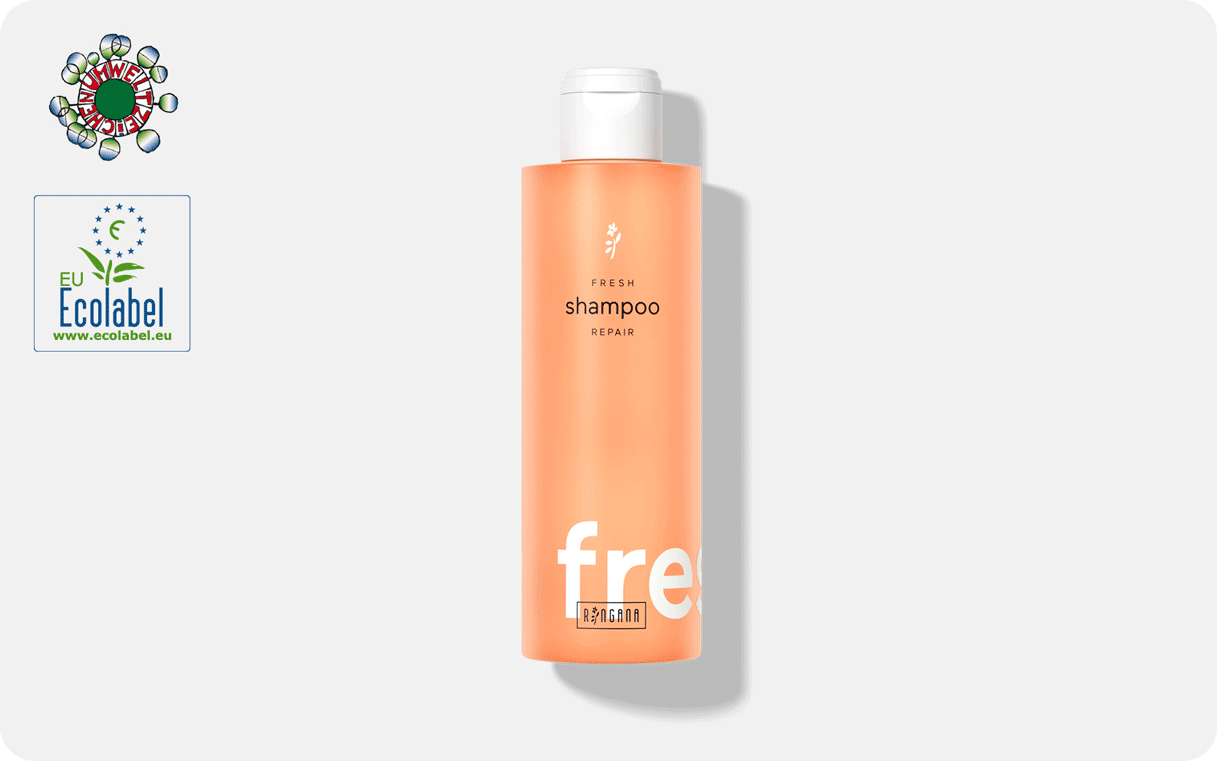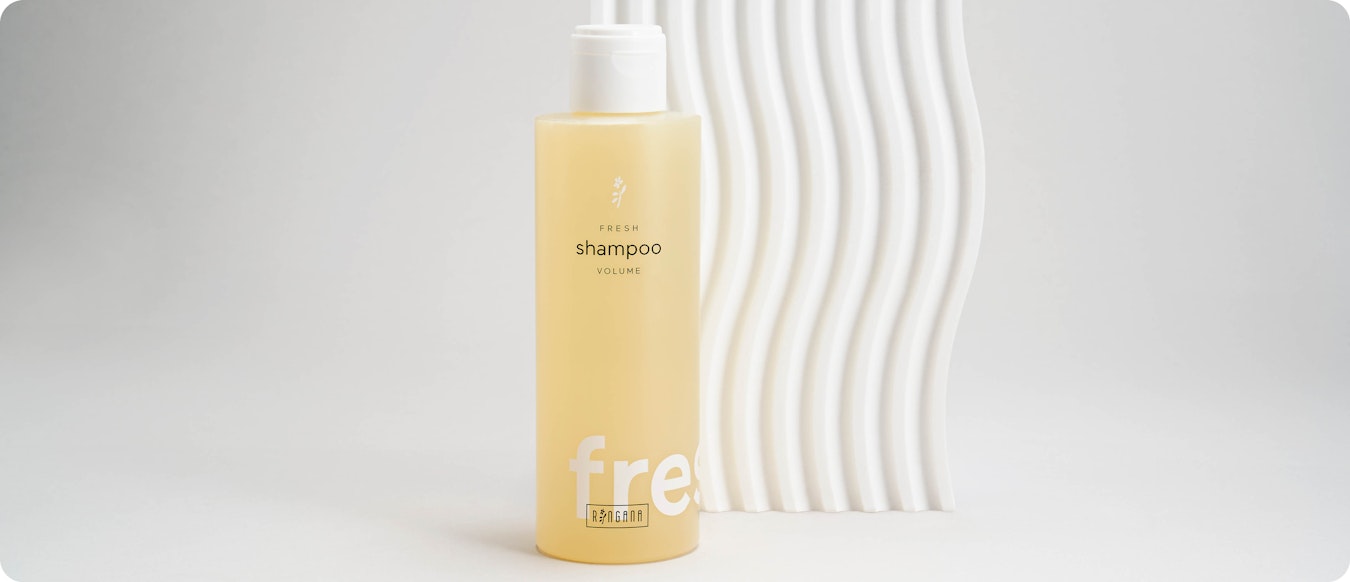The Austrian Ecolabel, just like the EU Ecolabel at EU level, are official labels that are awarded to the best products available on the market when it comes to environmental protection and sustainability. RINGANA was one of the first skin care companies in Austria to be recognised with the Austrian Ecolabel, when the first product to be certified was its FRESH soap, which is hand-scooped, hand-cut, hand-stamped, and handily wrapped in an organic cotton hand towel.
But it didn’t stop with the certification of just one product. FRESH body wash, FRESH soap liquid, FRESH volume shampoo, FRESH repair shampoo and FRESH scrub face & body have also since been awarded the Austrian Ecolabel and the EU Ecolabel – a first in the high-end cosmetics industry!
What makes the Austrian Ecolabel
and the EU Ecolabel so special?
One of the key criteria for obtaining these certifications is that the potential impacts of the products on the environment are minimised. To this end, many different factors are considered including the biodegradability and aquatic toxicity of the ingredients used, the reduction and/or complete avoidance of harmful ingredients, or the residual drainability of product containers.
What do the individual criteria for the Austrian Ecolabel and the EU Ecolabel look like in detail?
#1 Toxicity with regard to aquatic organisms /
Critical dilution volume
The critical dilution volume shows how much fresh water needs to be added to a product to make it safe for the environment and for aquatic organisms. There are various threshold values for different product categories which cannot be exceeded. Depending on the type of product, the volume may range from a few litres to several thousand litres of water per gram of the product.
#2 Biodegradability
There are two ways in which substances can be broken down by microorganisms or algae once they are in the environment: oxygen-rich aerobic breakdown, and anaerobic breakdown which happens without oxygen. To fulfil the criteria for the ecolabel, all substances must easily break down under aerobic conditions, and be biodegradable under anaerobic conditions. This guarantees that product residues do not build up, but can be removed from the environment.
#3 Banned or restricted substances and compounds
This criterion covers numerous substances which may not be contained in a product at all, or are subject to a certain threshold value. Many preservatives such as parabens or triclosan, as well as microplastic, nanomaterials or hormonally active substances are completely banned, for example. Threshold values are in place for other substances such as fragrances, colourants, or wash-active substances (surfactants). This ensures that only raw materials are approved whose environmental impacts remain within acceptable limits.
#4 Container and packaging
When the eco-friendliness of a product is assessed, its packaging also plays a major role. To obtain an ecolabel, secondary packaging such as outer cardboard casing, is not permitted. This cuts back on unnecessary packing material and reduces CO2 emissions. Furthermore, the relationship between contents and packaging is considered. This aims to ensure that the packaging is not disproportionately large in relation to the contents. Apart from the packaging design, other factors taken into consideration are correct dosability, the recyclability of any plastics, and the residual drainability of the product.
#5 Suitability for use
For a product to meet the standard market requirements it must also fulfil its specified function: a shampoo, for example, must clean hair. To obtain ecolabel certification, each product must undergo an independent effectiveness test, where it is compared with a competing product. Only if the product is also effective can it be awarded the ecolabel.


 Zur Übersicht
Zur Übersicht